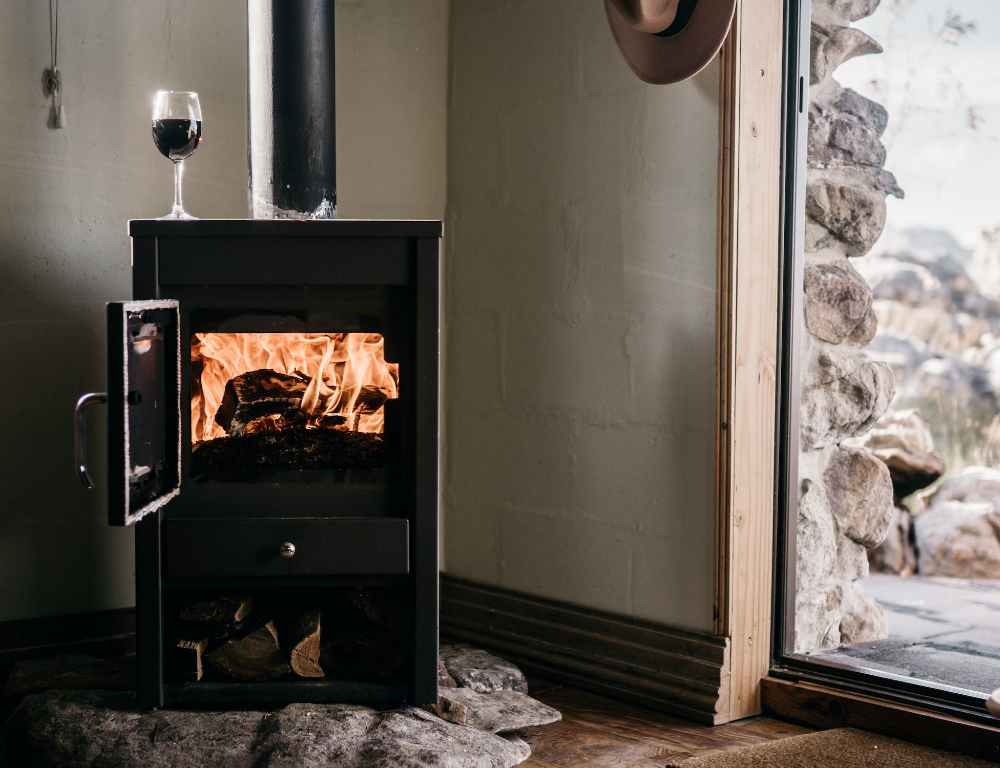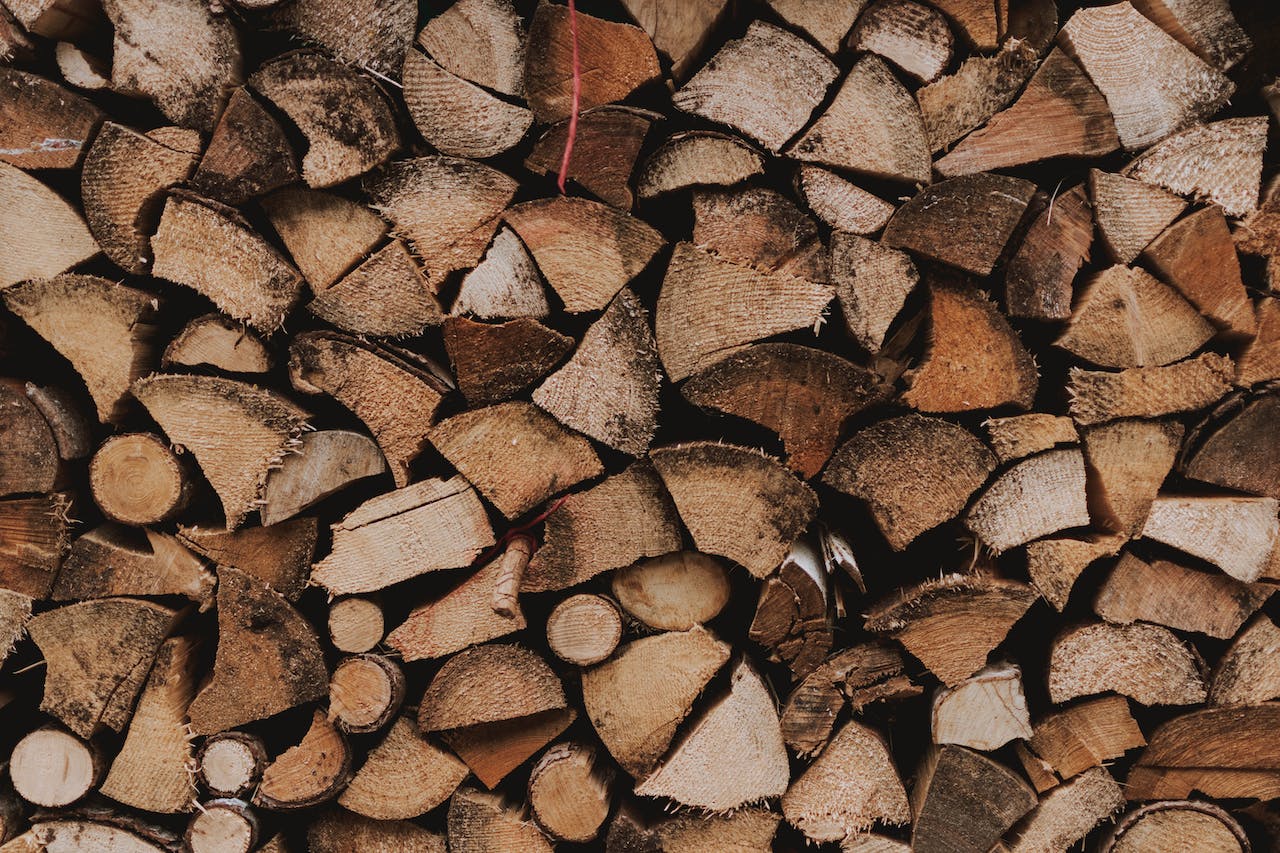- Home
- Scotland's changing climate
- Urban Housing in Scotland
- Maintenance
- Ventilation
- Airtightness
- Insulation
- Lofts - insulation at ceiling level
- Lofts - insulation at rafter level
- Cavity wall insulation
- Solid Walls: Internal vs External Insulation
- Internal Solid Wall Insulation (IWI)
- External Solid Wall Insulation (EWI)
- Timber frame retrofit
- Windows and doors
- Openings in 'historical' buildings
- Openings in 'non-historical' buildings
- Ground floors
- Suspended floors
- Suspended floors - from below
- Suspended floors - from above
- Solid floors
- Insulation materials
- Building science
- Space heating
- Solar energy
- Product Selector
Wood Stoves
Wood stoves are effective heating devices that use wood to heat a space or the whole house. They operate on a straightforward premise, producing heat through convection and combustion. First, firewood must be loaded into the firebox and lit with kindling or a fire starter. When wood burns, it releases a variety of combustion byproducts along with heat and light. Heat is transported by radiation and convection, and the air supply is managed by movable vents. To ensure safety, combustion byproducts are vented outside the building through a chimney or flue system. To keep things operating efficiently and stop chimney fires, regular cleaning and maintenance are necessary. Wood stoves are renowned for their sustainability and dependability, but for safety and best results, they must be operated responsibly.
The Advantages of a Wood Stove
Installing a wood stove in a home in the UK can have several advantages and disadvantages, depending on various factors such as your location, heating needs, and personal preferences. Here are some of the pros and cons:
1. Energy Efficiency:
Wood stoves are known for their high energy efficiency, as they can provide a substantial amount of heat from a relatively small amount of wood. This can help reduce heating costs.
2. Environmental Benefits:
Burning wood can be considered a more sustainable and environmentally friendly heating option when compared to fossil fuels like coal or oil, as long as the wood is sourced responsibly. (But see below)
3. Ambiance and Aesthetics:
Wood stoves provide a cosy and rustic ambience, adding warmth and character to your home. They can create a focal point in a room and contribute to a charming atmosphere.
4. Backup Heating:
Wood stoves can provide heat during power outages, making them a reliable backup heating source in emergencies.
5. Independence from Utility Companies:
Using a wood stove can reduce reliance on utility companies for heating, providing more control over heating costs.
6. Reduced Carbon Footprint:
Wood stoves can have a lower carbon footprint when used responsibly and with well-seasoned wood than other heating methods.
But be aware....
1. Initial Cost:
The purchase and installation of a wood stove can be relatively expensive, especially if you need to modify your home to accommodate it. Costs can include the stove itself, flue installation, and safety measures.
2. Maintenance and Cleaning:
Wood stoves require regular maintenance and cleaning to operate efficiently and safely. This includes cleaning the chimney, removing ash, and checking for creosote buildup.
3. Fuel Storage and Preparation:
Space is needed to store and season firewood, which can take up space and require effort. It also requires proper handling to ensure it's dry and ready to burn.
4. Emissions and Air Quality:
Wood stoves can produce particulate matter and emissions that may impact local air quality and health, especially in urban areas (see 'Pollution concerns' below. Choosing an efficient, low-emission stove and burning properly seasoned wood to minimise emissions is important.
5. Safety Concerns:
Improper installation or operation of a wood stove can pose safety hazards, including fire risk, carbon monoxide poisoning, and burns. It's crucial to follow safety guidelines and have your stove professionally installed.
6. Heat Distribution:
Wood stoves primarily heat the area they are located in, which may lead to uneven heating in larger homes. You may need additional means of distributing heat throughout the house.
7. Regulatory Compliance:
In the UK, regulations and standards govern installing and using wood-burning stoves to address air quality (see below) and safety concerns. Complying with these regulations can be a disadvantage if not properly considered.
Before deciding to install a wood stove, it's essential to carefully consider your specific circumstances and needs and any local regulations or restrictions. If the decision is made to install a stove, specify a high-efficiency, low-emission model and follow best practices for safe and responsible wood burning.
Pollution concerns:
Concerns are primarily related to the combustion of wood and the emissions produced during the burning process. Here are some of the key pollution concerns associated with wood stoves:
Particulate Matter (PM): Wood stoves emit fine particulate matter, often called PM2.5 (particles with a diameter of 2.5 micrometres or smaller). These tiny particles can be inhaled deep into the lungs and are associated with respiratory issues, such as asthma, bronchitis, and cardiovascular problems.
Carbon Monoxide (CO): Incomplete combustion of wood in stoves can release carbon monoxide, a colourless, odourless gas that is toxic when inhaled in high concentrations. Symptoms of CO poisoning include dizziness, headaches, and even death in severe cases.
Volatile Organic Compounds (VOCs): Wood stoves can release volatile organic compounds into the air. These compounds can contribute to the formation of ground-level ozone and smog, which can be harmful to human health and the environment.
Polycyclic Aromatic Hydrocarbons (PAHs): Burning wood in stoves can also produce some carcinogenic polycyclic aromatic hydrocarbons. Exposure to PAHs is a concern, particularly in areas with high wood stove use.
Nitrogen Oxides (NOx): Wood combustion can release nitrogen oxides into the atmosphere, contributing to air pollution and reacting with other compounds to form acid rain.
Greenhouse Gas Emissions: While wood is considered a renewable resource, burning it in stoves releases carbon dioxide (CO2) and methane (CH4) into the atmosphere, contributing to greenhouse gas emissions and climate change.
Indoor Air Quality: Wood stoves can also impact indoor air quality if not properly maintained or if the wood is not burned efficiently. Smoke and pollutants from the stove can enter the living space, leading to health issues for occupants.
To mitigate these pollution concerns, using wood stoves certified by relevant authorities and adhering to emission standards is essential. Modern, EPA-certified wood stoves are designed to burn wood more efficiently, reducing emissions and improving air quality.



